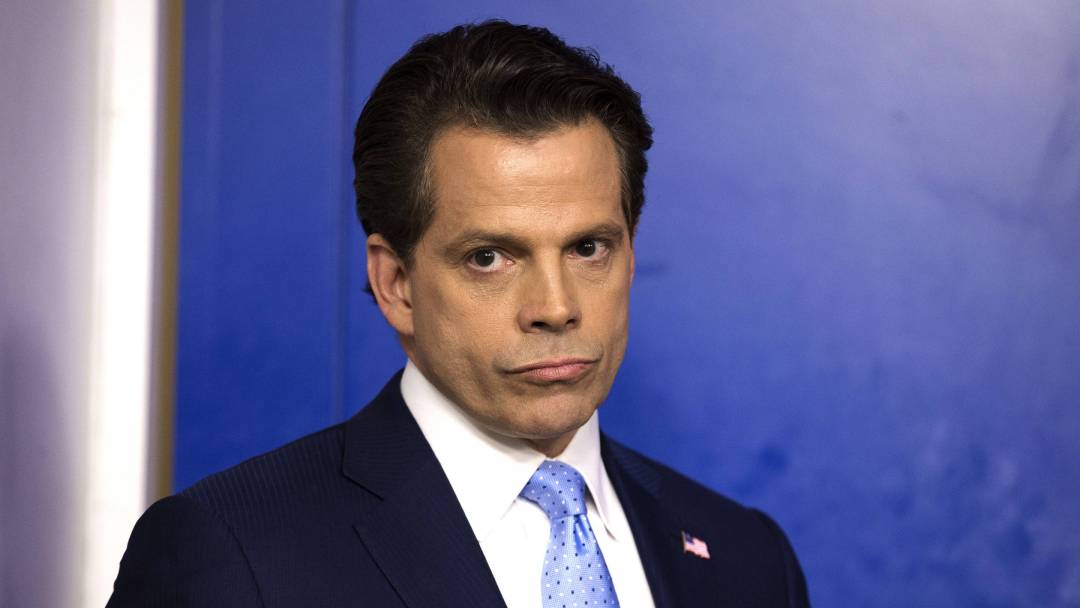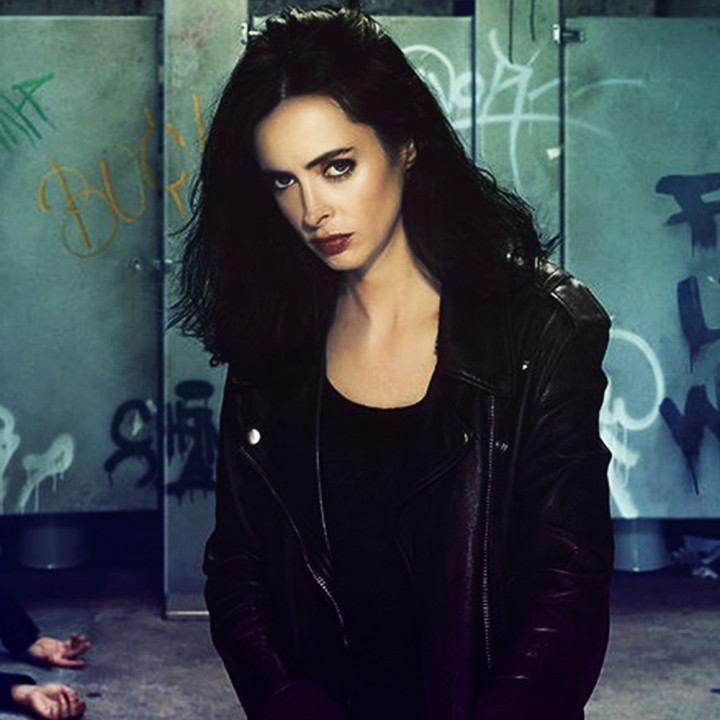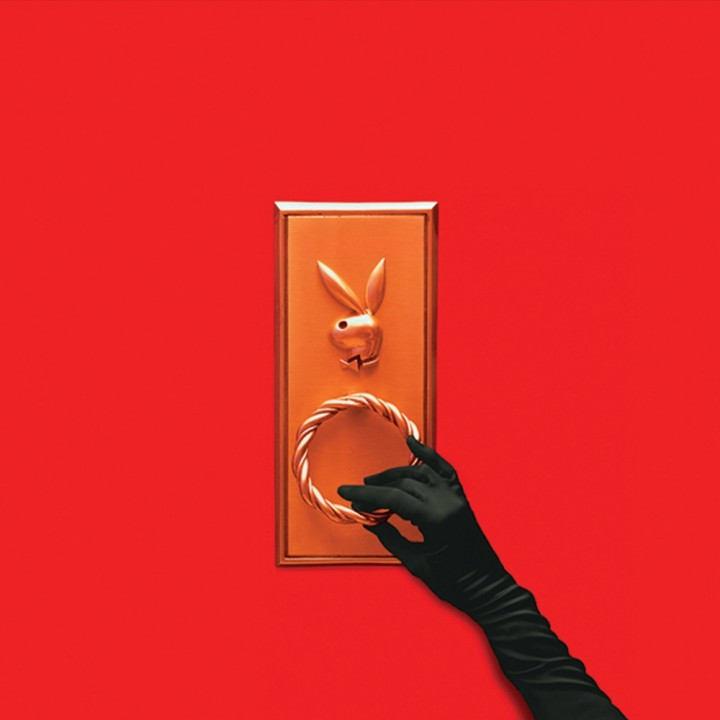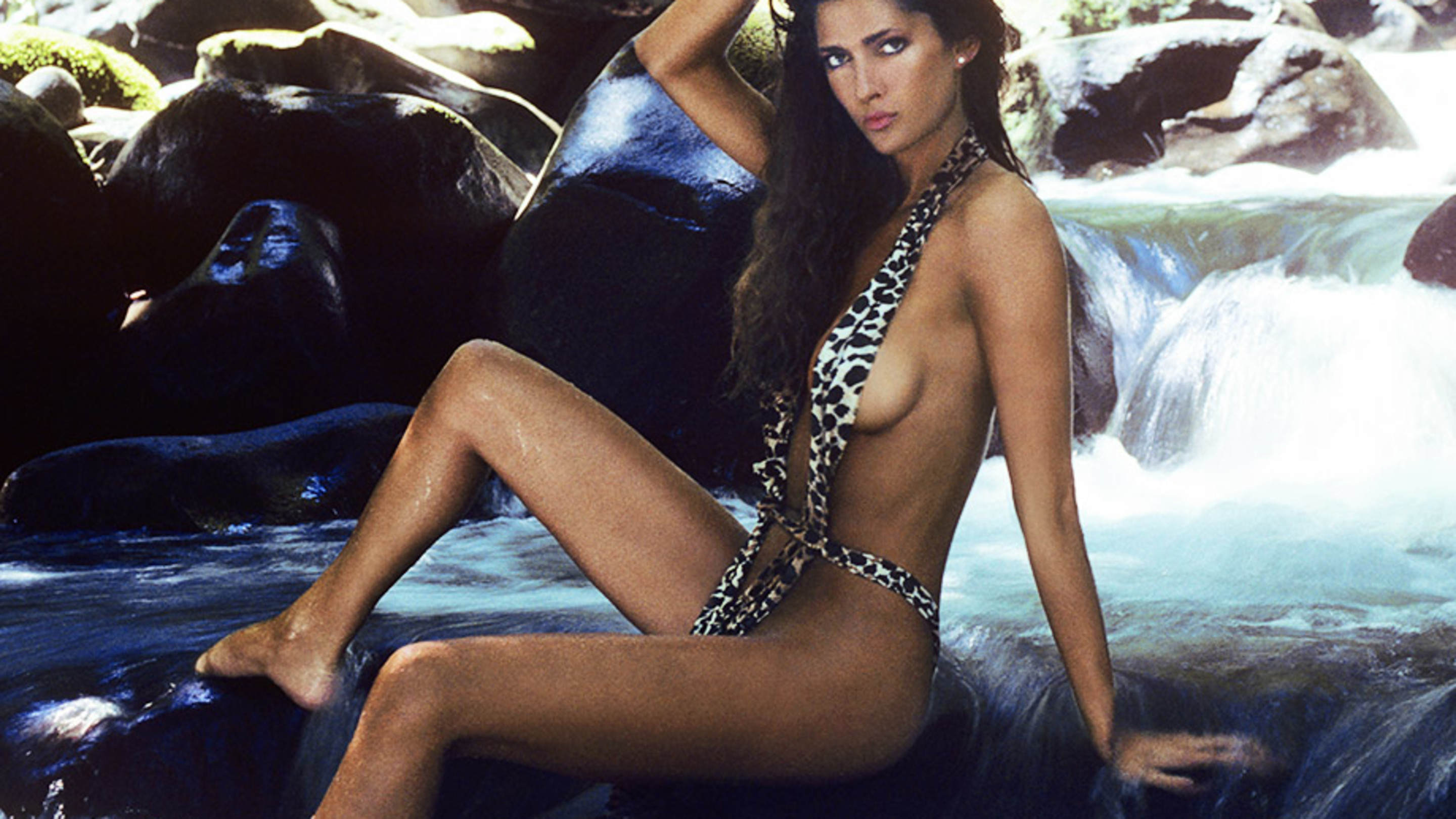
In 1991, Tula Became the First Transgender Woman to Pose Naked in Playboy
Before Bruce Jenner sat down with Diane Sawyer, before Laverne Cox earned an Emmy nod for Orange Is the New Black and before President Barack Obama appointed the first transgender woman to a senior government position, there was Tula. A striking six-foot-tall British model whose face graced magazine covers and popped up in national ad campaigns for vodka and lingerie in the 1970s, Caroline “Tula” Cossey never yearned to be more than a working model and, someday, a wife. But when her enormous success as a model backfired into public hysteria, she had decisions to make. She could stand and fight, or she could run away. She chose to fight. In the wake of it all, Tula would become the first of many things, much to her surprise.
In June 1981, Tula debuted as a Bond girl in For Your Eyes Only. To promote the film, she, along with the film’s other Bond girls, appeared in a Playboy pictorial, images from which appear in these pages. Tula’s career was soaring. Life was good. But everything changed the following year. The British tabloid News of the World revealed Tula’s secret in a single headline: JAMES BOND GIRL WAS A BOY. Indeed, Tula came into the world as Barry Cossey. She knew she was different from the beginning—a woman born in a man’s body. In 1974, after years of hormone therapy and counseling as well as a breast augmentation, she completed her transition with gender-reassignment surgery at a London hospital. The tabloid’s revelation in 1982 turned her into a media sensation. She became known as the “transsexual Bond girl.” People around the world—some naive, some ill-willed and many flat-out confused—wanted to know her story. So she decided to tell it, to own it and become a poised, albeit reluctant, leader in educating the world about an ignored, misunderstood and often-maligned minority.
Over the next decade, Tula would pen two memoirs, battle the British government to change her gender on her birth certificate and talk about her transition on programs including The Howard Stern Show and The Arsenio Hall Show. She would also marry a wealthy businessman, who deserted her mere days after their honeymoon. As a beautiful woman at the forefront of a sociosexual-rights struggle, Tula approached Playboy and asked to pose for the magazine. We signed on. In September 1991, she became the first transgender woman to appear in these pages in her own pictorial. The pictorial reignited a media firestorm. Hard Copy, for example, played Tom Jones’s “She’s a Lady” and Tower of Power’s “You’re Still a Young Man” as a lead-in to an interview with her. By 1993, Tula had disappeared from the public eye.
At a time when the transgender community is experiencing a historical and cultural turning point in acceptance, exposure and understanding, Playboy wanted to know what had happened to the groundbreaking model-author-activist. We found Tula, now 60, living a quiet married life in suburban Atlanta as Caroline Cossey, having ditched the pseudonym she adopted as a model. Coincidentally, she was in the process of converting her best-selling memoir, My Story, into an e-book for a summer release. In her first interview in 20 years, the Bond girl speaks candidly on a range of topics, from life after Playboy to Bruce Jenner to her own public persecution. As she says of the changing attitudes toward the trans community, “I feel like I was probably so many years too early.”
Was your retirement from public life voluntary or forced?
My career had definitely taken a turn. I was being offered only trans roles on shows like Hill Street Blues. I thought, No, that’s not right. I didn’t like it. There’s a difference between being known as Tula the transsexual international model versus just a successful model. It wasn’t the same. I felt like a circus act. I was also on a tour for my second book, doing eight interviews a day. It became overwhelming, and I got burnt out. Two, three years into it I worried about my sanity. I wanted quiet. I wanted peace of mind and to fall back into society in a more regular manner as a loving and supportive wife. For that reason, I became reclusive for an awfully long time.
How long have you been married?
This year is our 23rd anniversary. My husband is Canadian, and we got married in a church in Montreal. My birth certificate still said I was male, but they overlooked it when we got married, so it wasn’t a problem. I’m enjoying my life right now in Atlanta. We have a little home here and a place in Florida on the beach. My sister is in America, as is my mom, and we spend as much time together as a family as possible.


When I first moved here, I’d tell people, and they’d be shocked. They’d say, “Oh my God, you’ll wake up to dead animals on your front lawn!” But everyone has always given me the greatest respect. I’ve never had any major problems. One time I did have a fan who got a little touchy. He followed me into the bathroom and kind of grabbed me, telling me I was wonderful. That freaked me out. But that was the only situation. Actually, former mayor Maynard Jackson gave me honorary citizenship to the city, though he later rescinded it, saying “I wouldn’t have given it to somebody whose claim to fame was being transsexual.” That was an insult. [laughs]
Did you give it back?
I did offer, but he didn’t take it back. I still have it on my wall.
Your birth certificate still identified you as male when you got married. You had waged a costly eight-year fight with the European Court of Human Rights in the 1980s for the right to change your gender on the document. You won the case initially, but the British government appealed, and you lost on the appeal. It wasn’t until 2004 that Parliament passed the Gender Recognition Act, which allows transgender people to change their legal gender. Did you have issues living in the U.S. as a woman with a certificate that identified you as male?
I got U.S. citizenship 14 years ago. When I went through the process, one of the documents you have to produce is a birth certificate. My heart sank. I asked if I could use something else, said that I had lost it, but they said no. When I produced it, I looked at the lady and gave her my birth certificate, my name-change form and my letter from a surgeon confirming my 1974 surgery. She said, “Okay, fine.” And that was it. I expected her to leave the room and come back with a load of people behind her, but no. It was amazing. It was actually harder for my husband to get citizenship as a Canadian. [laughs] My birth certificate has since been changed, but it was a similar feeling when I applied for a gun license.
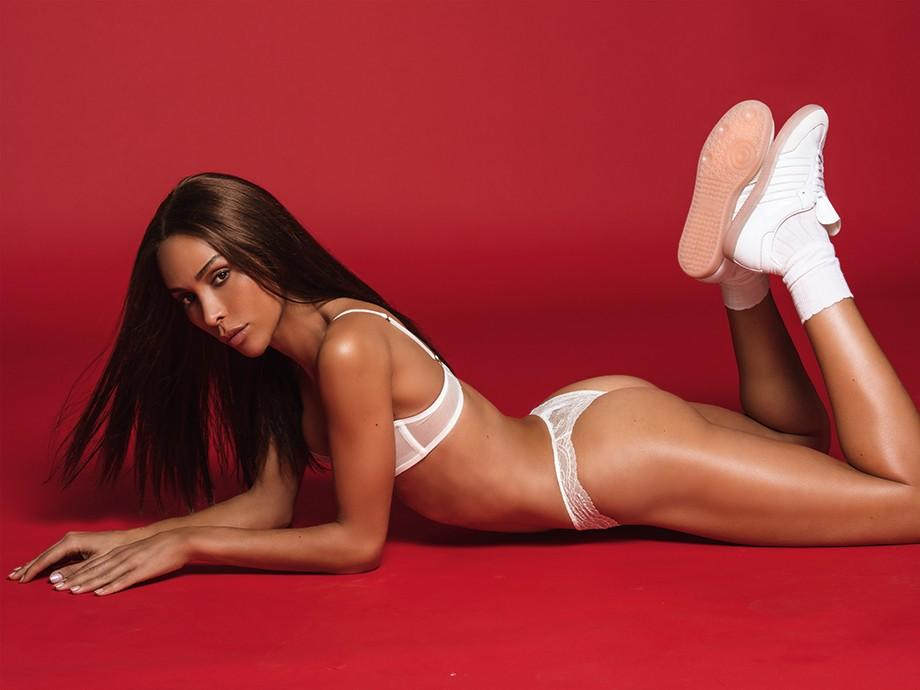
Enchanté, Mademoiselle Starring Playmate Ines Rau
November 2017 Playmate Ines Rau brings sultry holiday cheer from Paris
Yes. When I drive to Florida from Georgia I sometimes travel through unsavory areas, so I have one in my car. When I went to apply for the license, I thought, I bet I’m not going to get this. They take your fingerprints and do a background check, and I thought they would find me mentally unstable or something as a transsexual. I told my husband they’d probably think there was a psychological risk with me. I imagined them saying, “Do we want someone like that running around with a gun?” But it came through, and now I have to renew it every five years. I never had a problem in the States with any of those legal issues.
Do you have more allegiance to the U.S. or the U.K.? I definitely feel more allegiance to the U.S. It causes arguments with my sister because she says I’m anti-Britain. I’m not a royalist. I know for a fact [the editors of] News of the World were vile and spent quite a bit of money to get access to my medical files. That’s how they got concrete evidence to run the story that exposed me. I do miss the antiquities of Europe, and I go back every year, but America is such a beautiful country if you’ve got fire in your belly. I still have the home where I was born back in my village, but I would certainly feel much happier to spend what time I have left in the States.
In 1989 you married your first husband, Elias Fattal. After you returned from your honeymoon, News of the World printed another salacious headline, SEX CHANGE PAGE THREE GIRL WEDS, which outed you to Fattal’s conservative family. They summoned him, and you never saw or spoke to him again. Your marriage was annulled and you received no entitlements. Did you ever find out what happened?
There was no closure. I know he’s now married and has kids. It still burns me. Sometimes it comes across my mind like, I need answers. You’re left with a certain amount of psychosis. He knew I was transsexual because I gave him my book to read. You have four years with someone and you feel you’ve covered everything. My heart was broken. The whole thing is ugly. But you pick up the pieces and get on with your life.
It was after that marriage ended that you asked to pose for Playboy. Why?
I did Playboy as a Bond girl before everything about me came out, and I was very proud. This time, I was in the middle of my battle with the European Court of Human Rights. With the fight I was dealing with, trying to get recognition and everything, I thought it would be a great platform if Playboy would allow it. I had done pinups and calendars and glamour shoots, but to be the first transsexual in Playboy, I felt absolutely honored. I remember being invited to the Mansion to meet Hugh Hefner. He looked into my eyes and I immediately knew he felt my story. He felt my cause.

It helped to no end. Playboy’s readership is mostly male and heterosexual, so it allowed me to get out there and prove that people like myself can be sexy and attractive. That’s what I aimed to do at that point. I wanted to fight for the right of recognition. And Playboy gave me the opportunity to ask for a whole hour on most of the talk shows. I did shows with Phil Donahue twice, Maury Povich, Howard Stern, Joan Rivers and Arsenio Hall. It wasn’t just a 10- or 15-minute segment; it was an entire hour. And it gave people the chance to get to know me, to feel the situation and hopefully gain empathy and understanding. That was my goal, and Playboy was a great platform for that.
Your pictorial sparked as much interest and controversy as it did because in the 1990s there were few, if any, successful transgender actors, authors or activists. That’s no longer the case, with transgender men and women now recognized on television, in office and elsewhere.
Every time something positive happens, I’m watching with my mouth open, gasping and thinking, Fabulous. Laverne Cox is so comfortable talking about it. It’s the changing times. You used to see a gay friend on a TV show only because it was fashionable. It’s not fashionable. It’s reality. It’s the way it is.
What are your thoughts on Bruce Jenner’s coming out as a transgender woman?
It was a bit of a shock, to say the least. He’s been such an incredible athlete and hero, with all those raging male hormones running through his body. Despite the media buildup, I actually forgot Diane Sawyer’s interview was airing. But I saw clips in the days after. The guy is obviously going through a lot of pain and suffering. I hope he finds his happiness, but it’s going to be tough. I hope he’s not in a hurry to get surgery.
Why is that?
Sawyer never asked him, “Does wearing women’s clothes turn you on sexually?” That’s what somebody needs to establish. It’s actually the first thing a psychiatrist asked me in counseling. That would be a fetish, and there’s nothing wrong with having a fetish. Life’s too short; enjoy it, whatever. But I would hate for him to lose his three-piece suite and live to regret it. There’s a big difference between being a transsexual and being a transvestite. Again, there’s nothing wrong with being a transvestite. If you want to live that way, fine. But I’ve seen and heard so many horror stories of people going through surgery, becoming miserable and killing themselves because it was not the right step for them. And it’s a very painful surgery. I would hate for him to lose that part of his body and go through transition, especially at this stage in his life, because he’s no spring chicken. He’s in a public situation going through something so sensitive. I pray he gets the right counseling. It’s not what’s between your legs at the end of the day.
Has the growing acceptance of LGBT people made life easier?
I don’t know if I’ll ever stop feeling like a second-class citizen. It’s embedded and instilled from birth. You grow up, you don’t fit in, you don’t belong, you’re bullied. That doesn’t go away in five minutes. I don’t think it ever goes away. When I look back at it all, what I went through was tragic. But how do you deal with pain? You shrug it off. That’s the British way of doing it, at least. [laughs] I do feel a hell of a lot better. I’m an optimist and try to make light of the tragedies I went through, to see the funny side, and that has helped tremendously. I’m never going to be ashamed of something I had no control over, but I don’t want to walk around with it written on my forehead. I know I felt great when I was successful as a model, before my career took off in a different direction.
Speaking of your career, the job that started—and nearly ended—it all was For Your Eyes Only. The Bond films are bigger than ever, winning Oscars and raking in hundreds of millions of dollars. If you were to get a phone call tomorrow asking you to appear in another Bond movie, what would you say?
There’s not a big calling for 60-year-old transsexual women. [laughs] I would hear it out. I would never say no to something that’s tastefully done, but I’m not expecting to grace any covers anytime soon.
This summer you’re releasing the e-book version of your second autobiography, My Story. What should new readers expect?
The story itself is about injustice. I’ve always felt I was forced into this situation. The book is obviously topical, and I hope it helps people. People go through my situation and they’re rejected and resented and they have a hell of a time. I was blessed with a stable family and friends, and I don’t know if I could have gone out into the open and stood up and fought if I didn’t have them. I still get stacks of letters from people who say, “You made my transition easier.” That’s always going to be in my bones. With what time I have left, if I can help in any way, I will. Even Playboy rerunning my pictorial means something, so thank you, Hef. Live and let live. We have such ugliness in this world over religion, gender seems like a minor issue.
Editor's Note: Caroline Cossey's interview in Playboy Magazine's July/August issue was conducted before Bruce Jenner came out as Caitlyn Jenner. As such, Cossey refers to Caitlyn by her former name, Bruce, and relatedly as "he."
Cossey’s 1991 best-selling memoir, My Story, has just been released as an e-book and is available for download here on Amazon.com.
